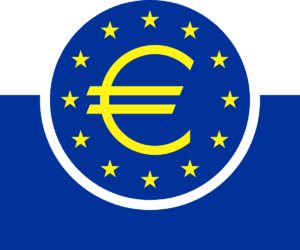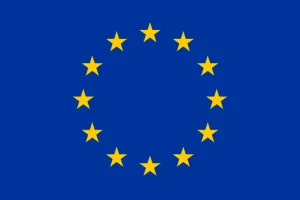History of the European Central Bank
The European Central Bank (ECB) was officially founded in 1999, but the first bricks were laid back in 1988. In 1988 the decision was made to create the European Economic and Monetary Union, guaranteeing free capital movement within Europe, a common monetary authority and a single monetary policy across the euro area countries. [2]
The reason for the foundation of the ECB in 1999 was that this is the year the Euro was introduced as a legal tender. However, European Union (EU) citizens didn’t notice the euro during the first three years. It was merely used for accounting purposes. That changed on the first of January 2002. This day marks the date that the euro was first released to the public. [3]
The European Central Bank today
The European Central Bank (ECB) is headquartered in Frankfurt am Main, the financial heart of Germany. The ECB’s main governing body is the Governing Council. The Council is responsible for all decisions that concern the monetary policy of the eurozone. This involves setting the key interest rates, drafting fiscal objectives and making sure that the financial reserves of the ECB itself and the national central banks of the countries in the eurozone are sufficient. [4]
The Council consist of six executive board members and the heads of the national central banks of the countries in the eurozone. The member countries are allocated into groups based on the size of their economy. The 5 countries with the largest economies, currently Germany, France, Italy, Spain and the Netherlands, are in group together and share 4 voting rights. The other 14 countries share another 11 voting rights. The governs in the groups take turns using the voting rights. Each month the voting rights rotate. The executive board member each hold a permanent voting right. This system was implemented to maintain the ECBs ability to take action quickly. In other words, prevent a deadlock when the number of Eurozone countries keeps increasing. [5]
As mentioned before, the core task of the ECB is maintaining a 2% inflation rate in the medium term across the eurozone. However, the ECB has other tasks as well. It concerns itself with making euro payments across the eurozone as smooth as possible. An example of this would be the introduction of the International Banking Account Number (IBAN) which makes it easy to send money to anyone with a bank account in the eurozone. Other tasks include holding and managing reserves in foreign currencies, supervising the national central banks of the eurozone countries and collecting and compiling a wide range of statistics. Last, the ECB is also responsible for the issuing of euro banknotes. [6]
Publications
More on the ECB’s website.
Sources
- European Central Bank | About
- European Central Bank | History
- European Central Bank | Our money
- European Central Bank | Rotation of voting rights in the Governing Council
- European Central Bank | About



